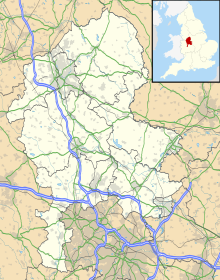| Site of Special Scientific Interest | |
 | |
| Location | Staffordshire |
|---|---|
| Grid reference | SK027283 |
| Coordinates | 52°51′06″N1°57′40″W / 52.851692°N 1.961017°W |
| Interest | Biological |
| Area | 105.80 hectares (1.0580 km2; 0.4085 sq mi) |
| Notification | 1987 |
| Natural England website | |
Chartley Moss is a 105.80 hectare biological Site of Special Scientific Interest in Staffordshire, notified in 1987. The area has been designated as an Area of Outstanding Natural Beauty, a Ramsar Convention protected wetland site, and a national nature reserve. There is no access without a permit. [1]
Contents
Chartley Moss was featured in a 1964 BBC programme which included a demonstration of the depth that a rod could be pushed into it, and how the surface of it, and trees growing in it, can move when it is walked on, as it is an example of a quaking bog or schwingmoor. [2]
In 1995 Chartley Moss was twinned with Tsukigaumi Mire, Hokkaido, in a gesture of goodwill between scientists from Hokkaido University and the University of Nottingham. [3] [4]
